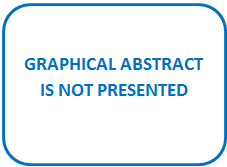Strategy of directions, forms and tools of state influence on development processes of the regional business environment
DOI:
https://doi.org/10.15587/2706-5448.2023.277797Keywords:
business environment, development of entrepreneurship, state influence, development of the regionAbstract
The object of research is the content and factors of the formation and development of the regional business environment as an economic resource for the development of the region, its formation and effective use. Effective development of the regional business environment is a key factor in the sustainable functioning of business structures. Entrepreneurial activity ensures the improvement of the social situation in the regions, solving problems related to the employment of the population, the level of income of its working part, the income of local budgets, blocking centers of social tension. This necessitates the formation of an entrepreneurial environment that ensures the improvement of the efficiency of business structures, the activation of factors of its development operating at the macro-, meso-, micro- and nano-levels. Despite the growing interest of scientists and researchers in the study of problems related to the formation and development of the regional business environment, the search for factors affecting it, many issues of theoretical and methodological properties in this field of science and practical activity remain unresolved. This work is devoted to the study of these issues.
The results obtained in the course of the study can be used by the state authorities, which form state programs for stimulating the development of the business environment at the regional level. And also by entrepreneurs, investors, financial structures, analytical and rating agencies when making relevant decisions related to the development and assessment of the state of the business environment. A number of conclusions can be used for analytical purposes, the formation of comparative indices, ratings, establishment of business contacts that correspond to the mutual interests of interested parties, strategic planning of the development of various regions, etc. Separate provisions can be applied in the process of further research into scientific and practical problems of the formation and functioning of business territories, as well as used in higher educational institutions to prepare a scientific and methodological base for teaching.
References
- Dykan, V. L., Zubenko, V. O., Makovoz, O. V., Tokmakova, I. V., Shramenko, O. V. (2013). Stratehichne upravlinnia. Kyiv: Tsentr uchbovoi literatury, 272.
- Maiorova, I. M. (2014). Vykorystannia prykladnykh siti lohistychnykh rishen dlia rozvytku turyzmu Pryazov’ia. Suchasni tekhnolohii upravlinnia turystychnym ta hotelno-restorannym biznesom. Mariupol: MDU, 4–5.
- Kaufman, B. E. (2003). The organization of economic activity: insights from the institutional theory of John R. Commons. Journal of Economic Behavior & Organization, 52 (1), 71–96. doi: https://doi.org/10.1016/s0167-2681(02)00153-1
- Peltzman, S. (2011). Ronald Coase and the Methodology of Economics. The Journal of Law and Economics, 54 (S4), S15–S29. doi: https://doi.org/10.1086/661943
- Singh, V. B. (1959). Adam Smith’s Theory of Economic Development. Science & Society, 23 (2), 107–132. Available at: http://www.jstor.org/stable/40400630
- Danilishin, B., Veklich, O. (2008). Ukraina v mezhdunarodnykh reitingakh ustoichivogo razvitiia. Ekonomika Ukrainy, 7, 13–23.
- Zakharova, S. H. (2008). Shliakhy udoskonalennia derzhavnoho rehuliuvannia turystychnoi sfery. Derzhava ta rehiony. Seriia: Derzhavne upravlinnia, 3, 81–87.
- Syzonenko, V. O. (1999). Pidpryiemnytstvo. Kyiv: Vikar, 435.
- Shershnova, Z. Ye. (2004). Stratehichne upravlinnia. Kyiv: KNEU, 699.
- Kindratska, H. I. (2010). Stratehichnyi menedzhment. Lviv: Vydavnytstvo Lvivskoi politekhniky, 406.
- Klivets, P. H. (2007). Stratehiia pidpryiemstva. Kyiv: Akademvydav, 320.
- Osovska, H. V., Fishchuk, O. L., Zhalinska, I. V. (2011). Stratehichnyi menedzhment. Kyiv: Kondor, 196.
- Kudenko, N. V. (2006). Stratehichnyi marketynh. Kyiv: KNEU, 152.
- Malska, M. P., Mandiuk, N. L., Zanko, Yu. S. (2012). Korporatyvne upravlinnia: teoriia i praktyka. Kyiv: Tsentr uchbovoi literatury, 360.

Downloads
Published
How to Cite
Issue
Section
License
Copyright (c) 2023 Oleksandr Cherniaiev, Nataliia Ihnatenko, Oleksandr Kovtun

This work is licensed under a Creative Commons Attribution 4.0 International License.
The consolidation and conditions for the transfer of copyright (identification of authorship) is carried out in the License Agreement. In particular, the authors reserve the right to the authorship of their manuscript and transfer the first publication of this work to the journal under the terms of the Creative Commons CC BY license. At the same time, they have the right to conclude on their own additional agreements concerning the non-exclusive distribution of the work in the form in which it was published by this journal, but provided that the link to the first publication of the article in this journal is preserved.







